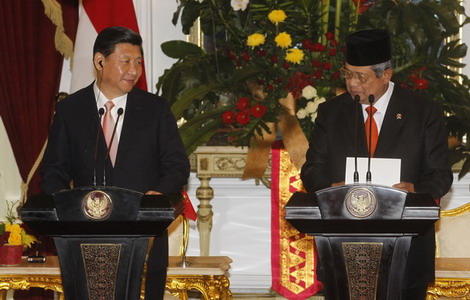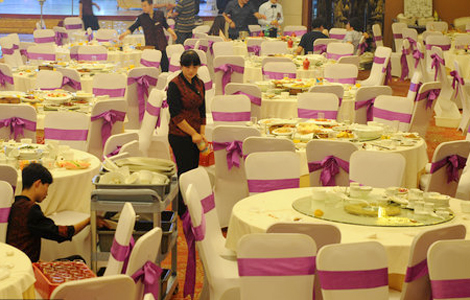
|
The InterContinental Hotel in Hangzhou, Zhejiang province. [Provided to China Daily] |
Statistics from the NTA show that the average occupancy rate for five-star hotels was only 50.1 percent in the first quarter.
"Luxury hotels usually don't like to cut rates, as they want to maintain their market position," Zhu said. "So the occupancy rate declined."
A government drive against luxury consumption using public funds in 2012 had an adverse effect on luxury hotels, many of which depend heavily on food and beverage services. Some luxury hotels' catering income contracted by 20 to 30 percent in the first quarter of 2013, some business insiders said.
To counter the decline, some luxury hotels launched buffet and group-purchasing services to get more from the lower and middle segments of the market.
The structure of China's hotel industry is unhealthy, Zhu said, as high-end and budget hotels outnumber middle-level hotels.
As of July, high-end facilities accounted for 56 percent of China's hotel rooms and budget hotels took up 22.6 percent, according to STR Global.
"The main clientele of hotels should be middle class," said James Lyu, executive director of the Hong Kong Hotels Association. Lyu said that four-star facilities should be the most numerous.
Hilton Hotel and Resorts planed to bring Hilton Garden Inn to China, which is the group's four-star hotel brand, and the first Hilton Garden Inn hotel will be opened in Shenzhen, Guangdong province, by the end of this year.
However, high-end hotel operators are still optimistic about China's market over the long term and are still adding new rooms.
Usually, hotel operators sign long-term management contracts with property owners, so they have to look beyond current market demand.
"We have very longstanding contracts and with that, we feel very comfortable and confident about this market," said Rainer Stampfer, regional vice-president and general manager of the Four Seasons Hotel chain in China.
Stampfer said Four Seasons does not worry about excess supply, as it builds hotels for the next 20, 40 or even 80 years.








